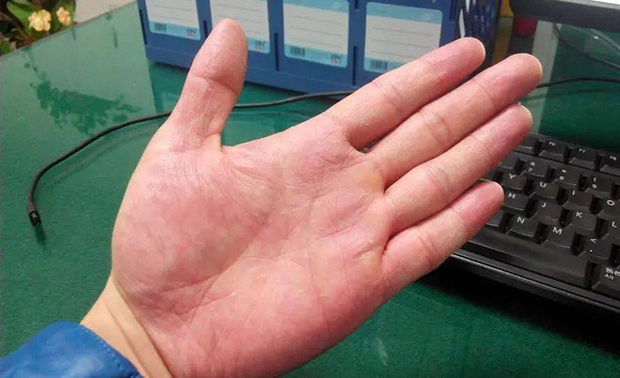Liver cancer can be detected early due to unexpected signs.
The liver is the largest internal organ in the body, performing numerous vital functions. These functions include metabolism (carbohydrates, lipids, proteins…), bile production and secretion, storage of vitamins and minerals, detoxification, and waste removal. Liver diseases, including liver cancer, are often detected late due to the organ’s substantial regenerative and storage capabilities.
Apart from adopting a healthy lifestyle and safeguarding the liver, everyone should learn how to regularly monitor their liver health. This includes routine check-ups at healthcare facilities and not overlooking the following warning signs of liver cancer, known as “2 odors, 2 itches, 2 redness”:
2 foul odors signaling liver disease
Several types of unusual odors on the body or in excretions may be cries for help from the liver:

Foul breath
If, after addressing poor oral hygiene or strong-smelling foods, your breath continues to emit a foul odor, it might be wise to have your liver checked.
Foul breath indicates the liver’s deep-seated “toxic storage,” reduced liver function leading to liver congestion and blood stagnation. When accompanied by dry mouth, bitter taste, persistent bad breath that worsens over time, it could potentially indicate liver cancer. In some cases, it could also be related to diabetes.
Strong-smelling sweat
Body odor causes discomfort and a loss of confidence similar to bad breath. This is also a common symptom in the early stages of liver cancer.
Liver diseases reduce the body’s detoxification efficiency, leading to continuous accumulation of toxins and waste in the body fluids. As the liver’s excretion function diminishes, the body attempts to enhance toxin elimination through increased sweating. This results in more, yellower, stickier body odor.
2 types of itching indicating liver cancer
In addition to unusual body odors, persistent and inexplicable itching can also be a symptom of liver disease, including liver cancer:
Skin itching
Itching of the skin is considered a hallmark symptom in people with liver conditions, especially liver cancer and cirrhosis. Due to reduced liver function affecting the filtration and detoxification of the body, harmful substances accumulate, leading to unusual itchy rashes on the skin’s surface.
Distinctive features of liver-related skin itching include yellowing of the skin, prolonged and bothersome itching, and the appearance of red rashes that do not subside with topical medications.
Itchy and dry eyes

Similar to skin itching related to liver disease, itchy eyes due to liver issues have unique characteristics. Itchy eyes in patients with liver cancer are often accompanied by dryness or/and yellowing of the eyes. Additionally, the eyes become sensitive to light, easily tearing up.
Therefore, if you notice these symptoms, in addition to an eye examination, it’s advisable to promptly seek a liver check-up to avoid missing the window for treatment.
2 “red” signs that indicate an early liver check-up is necessary
Traditionally, abnormal body color signaling liver disease has been associated with yellowing. For instance, jaundice in the skin, eyes, or nails. However, these 2 “red” indications may also signify severe liver conditions:
Red palms
Redness in the center or entirety of the palms is a clear indication of liver damage, known as “liver palms.”

This occurs because the declining liver function reduces the capacity to neutralize estrogen, leading to the rupture of capillaries and bleeding, resulting in redness on the palms. Simultaneously, reduced liver function causes an expansion of blood vessels in the palms, causing redness. Some individuals might develop small, round red spots or spider veins.
Red-colored urine
Many might not be aware that when the liver is compromised, the color of urine can also be affected to some extent. Particularly in viral hepatitis progressing to liver cancer, urine can turn from dark yellow to reddish-brown.
This is because the diseased liver is unable to metabolize bilirubin, causing it to accumulate excessively in the bloodstream and overload the excretory function. Passing through the excretory system alongside accumulated toxins, urine turns unusually colored, such as dark yellow, reddish-brown, or even containing traces of blood. This symptom often accompanies foamy urine.
However, these symptoms could also be linked to kidney problems or other health issues. Therefore, it’s best to seek medical attention as soon as you notice any of these abnormalities.












